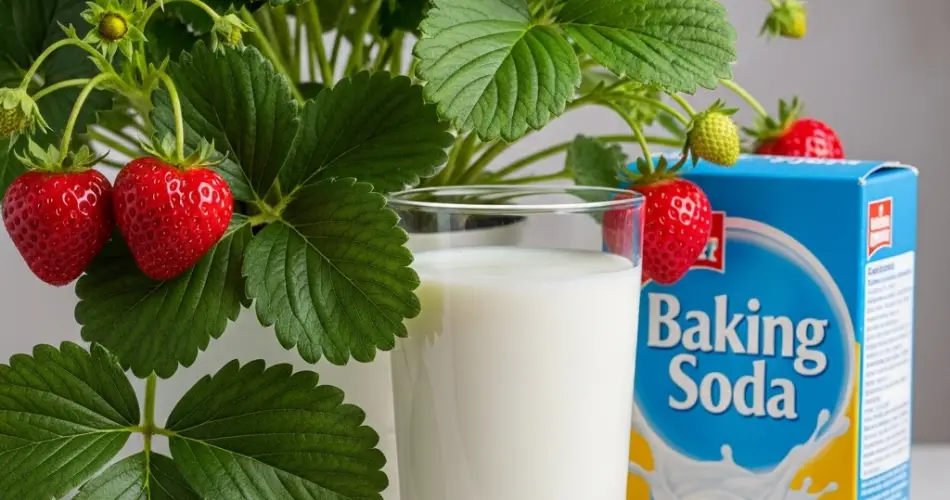Strawberries are a favorite among home gardeners, cherished for their sweet flavor and vibrant color. To cultivate healthy and productive strawberry plants, many gardeners are turning to natural, organic methods. Two common household items—milk and baking soda—have emerged as effective tools in promoting plant health and combating common garden issues.
Milk: A Natural Ally for Strawberry Plants
Milk, particularly in its diluted form, offers several benefits for strawberry cultivation:
-
Fungal Disease Prevention: Diluted milk sprays have been shown to combat powdery mildew, a common fungal disease affecting strawberries. The proteins in milk can produce reactive oxygen species when exposed to sunlight, which are detrimental to fungal pathogens.
-
Nutrient Supplementation: Milk contains essential nutrients like calcium and potassium, which support plant growth and fruit development.
-
Soil Microbial Activity: The application of milk can enhance beneficial microbial activity in the soil, promoting a healthier root environment.
Application Method:
-
Preparation: Mix one part milk (preferably skim or low-fat) with nine parts water.
-
Application: Using a spray bottle, apply the solution to the leaves of the strawberry plants, ensuring thorough coverage.
-
Frequency: Apply once a week, preferably in the morning to allow the foliage to dry during the day.
Baking Soda: A Cautious Approach
Baking soda (sodium bicarbonate) is often touted for its antifungal properties. However, its use in the garden requires caution
-
Fungal Control: Baking soda can help control fungal diseases like powdery mildew by creating an alkaline environment on leaf surfaces, inhibiting fungal growth.
-
Soil Impact: Excessive use can lead to soil alkalinity, adversely affecting nutrient availability and plant health.
Application Method:
-
Preparation: Dissolve one teaspoon of baking soda in one quart of water.
-
Application: Spray the solution onto the leaves of affected plants, covering both upper and lower surfaces.
-
Frequency: Apply once a week, and reapply after rainfall.
Caution: Avoid overuse and ensure the solution is well-diluted to prevent potential harm to the plants.
Integrating Milk and Baking Soda in Strawberry Care
When used appropriately, milk and baking soda can be part of an integrated approach to strawberry plant care:
-
Preventative Measures: Regular milk sprays can serve as a preventive measure against fungal diseases.
-
Targeted Treatment: Baking soda solutions can be used to address early signs of fungal infections.
-
Monitoring: Regularly inspect plants for signs of disease or nutrient deficiencies to adjust treatment plans accordingly.
Best Practices for Organic Strawberry Cultivation
In addition to using milk and baking soda, consider the following practices to promote healthy strawberry growth:
-
Proper Spacing: Ensure adequate spacing between plants to facilitate air circulation, reducing the risk of fungal diseases.
-
Mulching: Apply organic mulch to retain soil moisture, suppress weeds, and maintain soil temperature.
-
Watering Techniques: Water at the base of the plants to keep foliage dry, minimizing fungal disease risks.
-
Soil Health: Regularly test soil pH and nutrient levels, amending as necessary to maintain optimal growing conditions.
Conclusion
Utilizing milk and baking soda as part of an organic gardening approach can offer benefits in managing common strawberry plant issues. However, it’s essential to apply these substances judiciously and in conjunction with other best practices to ensure the health and productivity of your strawberry plants.



